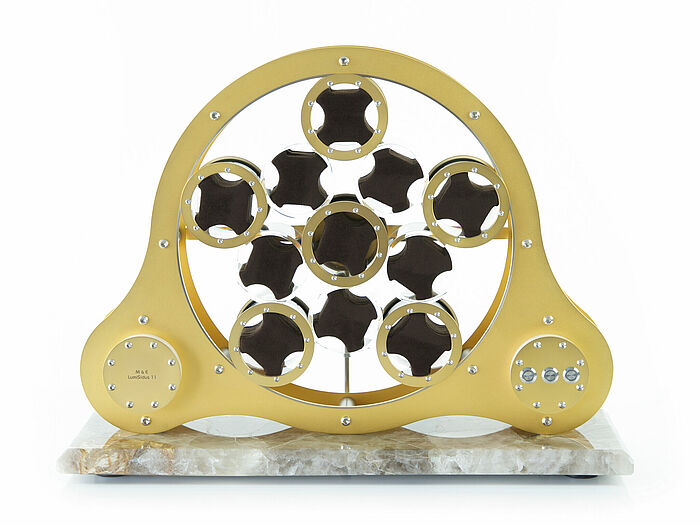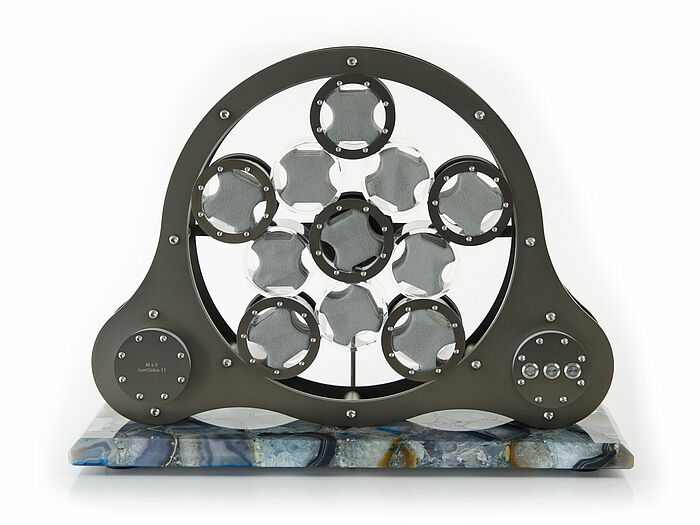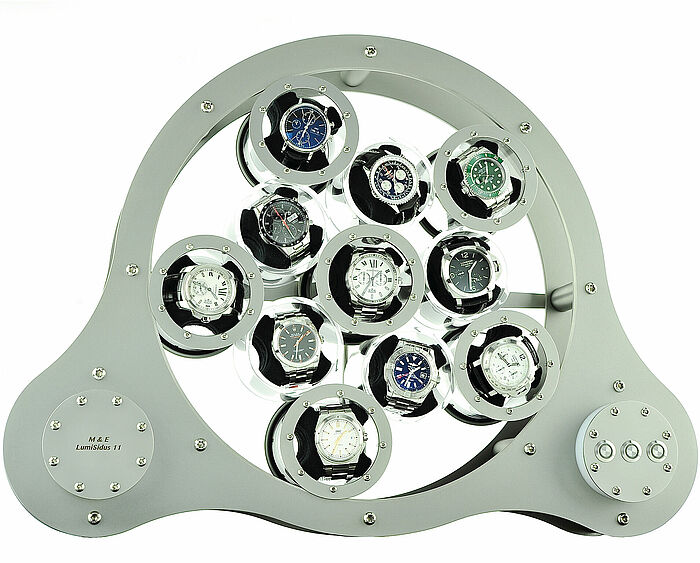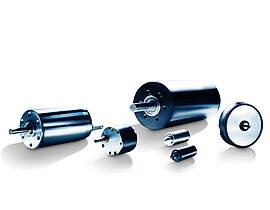Alexander Merklinger is a passionate unorthodox thinker and inventor. His passion for tricky mechanical tasks pursues him even in his spare time. It's no wonder that he is also a keen enthusiast and collector of high-quality mechanical watches. These mostly have automatic movements which wind up the watch normally as a result of motion by the wearer. Of course, this won't work if a watch is lying motionless in a cabinet, which is unavoidable if you happen to have several watches in your collection.
Motion instead of setting
If the watch stops, winding up and setting by hand can be quite time-consuming, especially if the timepiece has additional complications such as the display of date, day of the week, moon phase and so on. Merklinger had already planned to purchase a watch winder to keep in motion those timepieces that he wasn't currently wearing. After he had visited the above-mentioned exhibition, he decided to build such a device himself. And so began the development of a new type of watch winder that not only keeps the little mechanical works of art in gentle motion but also forms part of an aesthetically appealing all-embracing objet d'art.
The basic mechanical concept of the LumiSidus is characterised by its simplicity: The cylinders in which the watches are attached roll over each other and in this way keep each other in motion. Only the central cylinder has to be driven. The technical implementation of the idea also follows the principle of simplicity and clear lines. "The term " non-positive connection" is often used in technology", explains Alexander Merklinger, "this means that the rollers are in no way linked to one another, they simply touch each other at their outer surfaces. The motion is transmitted only as a result of the cylinders rolling off each other." For the entire device to function, these cylinders as well as the two outer retaining rings must be made with extreme precision. To assemble the watch winder, nine cylinders made of metal and perspex are simply placed in the frame around the driven central cylinder; stable connection of all elements in the system is not established until the eleventh cylinder is mounted.
No noise to disturb the meditative calm
Its counter-rotating motion emanates a meditative calm as the cylinders appear to float without the aid of gearwheels, belts or other means. Ten cylinders rotate not only about their own axis, but – like planets around their central star – also about the central cylinder. Of course, no drive noise is allowed to disturb this majestic performance. "One reason why we opted for the FAULHABER motor was because it doesn't make a sound when in operation", says Merklinger. "The extreme quietness of this motor clearly distinguishes it from all other motors available on the market.
The silent operation was an important factor but not the only requirement that M&E placed on the motor, recalls Hendrik Stockhaus, sales expert at FAULHABER: "It also had to be invisible, that is to say small enough to disappear in the largely transparent structure. However, it also has to deliver a high torque in order to keep the eleven cylinders in constant motion while moving at a very low speed. And, of course, it had to achieve all this reliably over a long period of time without maintenance."
After detailed consultation with the customer, the most suitable gear motor was selected. Thanks to its extreme reduction ratio, it can even operate at one tenth of a revolution per minute (0.1 rpm) – the actual speed of the LumiSidus watch winder is between 1 and 2 rpm. In keeping with the most Swiss watches circling in a LumiSidus winder, the little powerhouse is made at FAULHABER Minimotor in Croglio (Switzerland).
The motor is the central element of an all-embracing work of art and is made only from the highest quality components. For example, the stainless steel frame can also be supplied with a gold or platinum coating. The pedestal is made of either black granite or precious crystals (smoky quartz or agate). In their natural form, the latter do not reach the size needed to supply a plate of adequate size. For this reason, individual pieces of crystal are joined together in anelaborate process to form a seamless plate that looks as if it has grown naturally and is a work of art in itself.
App controls light and motion
An integrated lighting system using LEDs that are set in a groove in the stone give these crystal pedestals a mysterious lustre. Using the LumiSidus app, the owner can have the device light up in every imaginable colour. Incidentally, the watch winder derives its name from the idea of planetary motion and light: LumiSidus is a combination of the Latin words for light (lux, lumen) and orbiting celestial body (sidus).
Whoever entrusts their watches to a LumiSidus winder will be sure to enjoy the splendid brilliance and majestic circling motion of their prized possessions. The interval between changes in rotation direction can also be set using the app. "In some watches, the rotor which is responsible for automatic winding only runs in one direction", explains Alexander Merklinger. "This is why the direction of rotation must change at regular intervals so that every watch is wound up reliably."
The LumiSidus watch winders made their début at the Munich Time trade show last autumn after full-capacity production began in the summer. "We source all components and materials from Germany and Switzerland", emphasises Merklinger. Although still new on this exclusive market, the newcomer from Mannheim has already found a number of prospective customers and partners. Just a few years after their "big bang", the heavenly bodies of LumiSidus are already circling in a steady orbit.




